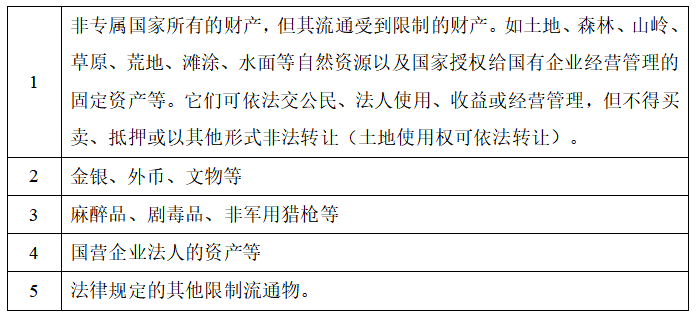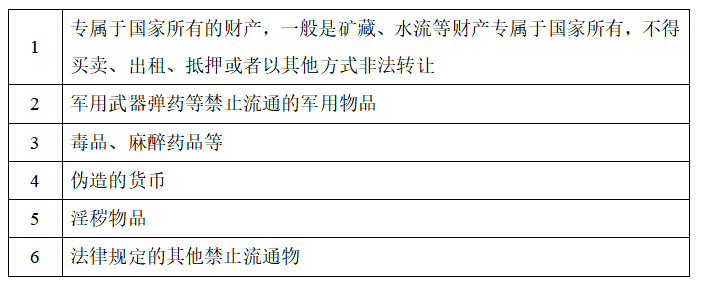Recently, the Sajie team has continued to receive a large number of RWA project inquiries. The underlying assets are also very strange, including agricultural products, real estate, precious metals, and even some pure concept projects that sound very psychedelic...
In fact, the Sajie team has made it clear in previous articles that, under the premise that my country’s 9.4 announcement and 9.24 notice remain valid, except for RWA projects that have passed the strict review of the Hong Kong Ensemble Sandbox and are issued under supervision and have a certain "ability to resist criminal risks", other types of RWA are very dangerous (especially RWA projects issued to residents in mainland my country).
Therefore, today, through this article, the Sajie team will directly explain which mainland assets can be used in the Hong Kong sandbox and which assets cannot be used, so that partners can conduct business more efficiently and save consulting fees.
01 Basic understanding: Restrictions and judgment criteria for RWA of mainland assets
First of all, it should be made clear that assets that are "physically" located in mainland my country and mainly operated for mainland residents can be used for RWA. Several previous successful RWA projects have been able to prove this.
However, there are indeed restrictions on the issuance of RWA in Shahe, Hong Kong for assets located in mainland my country. According to the practical experience of the Sajie team, the following three types of assets cannot be used as RWA:
1. Assets that do not comply with the laws of Hong Kong, my country;
2. Assets that do not comply with the laws of mainland my country;
3. Assets that are not suitable for issuance in Hong Kong at this stage.
Mainland assets issuing RWA in Hong Kong must comply with the “dual compliance principle”
In fact, the logic is easy to understand. The assets are in the mainland, but the tokenized traditional assets are actually sold and operated in Hong Kong. The entire financing chain spans the mainland and Hong Kong, and naturally needs to comply with the "double compliance principle" - the underlying assets are compliant both in the mainland and in Hong Kong.
1. Hong Kong regulations
Given that Hong Kong is mainly responsible for the asset tokenization and financialization operations in the RWA project, in terms of Hong Kong regulations, we need to pay special attention to the requirements of financial regulatory laws and regulations on underlying assets when issuing financial products, such as the Securities and Futures Ordinance, the Banking Ordinance, the Insurance Ordinance, the Anti-Money Laundering and Terrorist Financing Ordinance, etc.
The Sajie team has said before that Hong Kong, my country, has not issued clear regulatory legal documents on the issuance and supervision of RWAs, and is still in the exploratory stage. Therefore, the current RWA projects still have a "one-project-one-discussion" situation during the review process of sandbox supervision. However, the lack of clear regulatory legal documents does not mean that everyone has to cross the river by feeling the stones. Grasping the consistent regulatory principles of financial assets in Hong Kong, my country, and referring to the specific issuance rules of similar financial products can greatly increase the success rate.
In principle, Hong Kong has always adopted the "substantive supervision principle" (or "see-through supervision") for financial assets, which means that compliance depends on the substance of the asset rather than the shell. It is not feasible to cover up the illegal core with a compliant appearance. In terms of specific regulations, it is necessary to make a judgment based on the regulatory rules applicable to the physical assets corresponding to the RWA. For example, if the underlying asset is a bond, the review regulations for the underlying asset are applicable to the Securities and Futures Ordinance of Hong Kong and related regulatory documents.
2. Mainland regulations
Since the underlying assets of tokenization are physically located in mainland China, we need to focus on the legality of the underlying assets themselves and the legality of the operating methods, which needs to be viewed from two aspects.
In terms of the legality of the underlying assets themselves, according to my country's Civil Code and relevant judicial interpretations and judicial practice experience, objects can be divided into three types based on whether they can be circulated and the scope of their circulation:
- Circulation
- Restricted Circulation
- Prohibited items
Circulating objects refer to objects that are allowed to circulate freely between civil entities by law; restricted circulation objects refer to objects that have certain restrictions on the scope and degree of circulation by law; prohibited circulation objects refer to objects that are expressly prohibited from circulation and transfer by law. In my opinion, the Sister Sa team believes that objects used for RWA should be "circulating objects" or "restricted circulation objects" with permission.
In practice, "restricted circulation items" generally include:

“Prohibited items” generally include:

In terms of the legality of the operation, since Hong Kong has cash flow requirements for the underlying assets of RWA projects (the projects currently issued are all commercial projects with actual application scenarios), the underlying assets must also comply with the provisions of Chinese law at the operational level: stay away from the red line and obtain the administrative licenses required for operation.
Assets that are not suitable for issuance in Hong Kong at this stage
This type of asset itself meets the requirements of the "double compliance principle", but is not suitable for issuance in Hong Kong at this stage.
On the one hand, RWA in Hong Kong is still in the sandbox experiment stage, so the selection of underlying assets is more cautious, and the recommended underlying asset types are assets with "high-tech" and "clean and green" attributes. Therefore, the Sajie team believes that if you want to issue RWA projects in Hong Kong at this stage, the underlying assets must meet at least one of the above two elements, such as carbon emission rights, which are property rights that are not physical but closely related to the green economy.
On the other hand, some assets that want to be revitalized through RWA and assets that cannot generate good cash flow are not suitable for RWA in the Hong Kong Sandbox, as the probability of passing is low. For example, some real estate with low economic value, no matter how much it is "empowered" through emerging concepts, cannot change the reality that the market value of the assets themselves is gradually decreasing, and the possibility of issuing RWA for such assets is very low.
02 These specific mainland assets are basically not suitable for RWA...
After our partners understand the principles and standards for determining whether the underlying assets can issue RWAs, we will provide a centralized Q&A session for assets that have received a lot of inquiries recently or that need to be discussed separately, in order to save everyone consulting fees.
Jewelry and collectibles RWA
Jewelry and collectibles RWA is a category with a large number of consultations, and it is also the most difficult to give clear legal opinions on this type of RWA project. This is mainly because jewelry and collectibles are of many varieties and depth, and various special restrictions are scattered in laws and regulations, judicial interpretations, administrative regulations, departmental regulations and national standards. If it is not a common category, it usually requires a lot of legal investigation work before an opinion can be given. Generally speaking, it is not recommended to use jewelry and collectibles as the underlying assets of RWA at this stage.
If the partners' assets are in the following situations, they can be vetoed:
1. Gemstone products with gambling nature. Generally speaking, the quality of gemstones cannot be judged by the outer surface, and the internal quality of raw materials and rough stones can only be known after cutting, such as jadeite rough stones, unpeeled turquoise rough stones, unopened pearls, etc.
2. Processed jewellery and jade, such as B-grade jadeite, C-grade jadeite, etc.;
3. The state prohibits the sale of biological products (organic gemstones), such as ivory, helmeted hornbill products, giant clams, queen shells, corals, rhinoceros horns, hawksbill turtles, copal resin, sea willows, amber pillows, amber powder, cinnabar, etc.;
4. Low-quality or processed jade or jade imitations, such as albite jade, Guatemalan jade, burnt red jade, etc.;
5. Precious metals such as pure gold and pure silver, the circulation of which is restricted or prohibited by special laws in certain countries.
Intellectual Property RWA
Intellectual property, such as copyright, trademarks, patents, etc., has actually appeared in many projects in the overseas crypto asset circle, and even many film and television projects have achieved short-term and fast financing through tokenization. At present, we have not seen any successful cases in the Hong Kong RWA project, but the Sister Sa team believes that intellectual property is not an RWA underlying asset that cannot be explored. Specific projects should be analyzed specifically. If the intellectual achievement does have great commercial value, it can be boldly tried to "break through" after the regulatory norms are clarified.
Agriculture and Agri-food RWA
"Can Sunshine Grapes be used for RWA?" Not long ago, a friend came to consult the Sajie team with RWA promotional materials of a similar grape project in China. We do not comment on specific projects, but only look at agricultural and agricultural product RWA projects in an abstract way. If the project meets the standards for scientific and technological ethics review, has high scientific and technological content and scientific research value, and has good commercial value, it can also boldly try to "break through" after the regulatory regulations are clarified.
Pure Concept RWA
Partners must understand one thing: RWA is not crowdfunding. For such projects, the Sajie team usually directly gives a veto.
03 Conclusion
One more point: For the underlying assets that are neither in the mainland nor in Hong Kong, can RWA be done in Hong Kong? The Sajie team believes that there is no regulation on where the assets must be located to apply for Hong Kong RWA. From the perspective of Hong Kong's positioning as an "international financial center", the location of the underlying assets themselves should not be a condition that hinders RWA. Authenticity, credibility, compliance, and investment value are the hard indicators.





